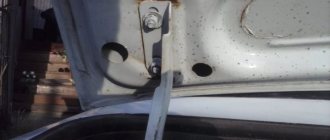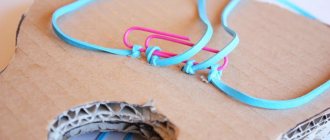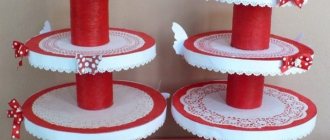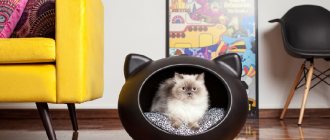Speakers are an acoustic system and come in a variety of sizes. From a huge music center to a portable small battery-powered speaker. This device is quite simple and can be assembled at home.
Acoustic system design
Typically, speakers consist of several speakers, which in turn consist of several magnets (usually two). The operation of the magnets is controlled by an amplifier that operates at audio frequencies.
Speakers are divided into two types: passive and active. In passive devices, the amplification element does not require additional power. The simplest passive system is regular headphones. Active devices require additional power to function.
↑ Selecting speakers
The choice of speakers was caused by several circumstances.
Having several of each type of speaker, I could compare their characteristics and choose the best, evaluate the difference between speakers of the same type. The speakers, although very old, are still available and very cheap. Some are still produced today, but I can’t say anything about the new product. I have quite a few different midrange-shp speakers, but for various reasons I rejected them and chose 3 GDSh2-8 (2GD-40).
The choice of tweeters was very limited. The most affordable is 2GD-36, it was in every TV. It is not advisable to install 10GD-35 and similar speakers in this case; in addition, too many clones impair the possibility of repetition, since they are somewhat different from each other. 3GD-31 requires radical improvement.
The 25GDN3-4 (15GD-14) woofer for MAS is almost the only one. The best choice would be the 15GD-17, but they are very scarce, and the 25GDN3-4 are found in the 15AS-109 and many of their clones, so they are available. The choice of the woofer is also due to the fact that it sounds good in the 15AC-109.
You can probably install 10GD-34, but it has a weaker magnet and noticeably worse characteristics. Other widespread Soviet speakers for MAC, such as the 10GD-30, are not suitable because they require a much larger box. You can install another woofer if a box of up to 20 liters is sufficient for it.
DIY computer speakers
In order to assemble a PC speaker system you will need:
- Speaker 3W (from 2 pcs.).
- Mini-Jack 3.5mm connector (it is standard for connecting speakers or headphones and is very common).
- Audio amplifier. It is recommended to use digital RAM 8403.
REFERENCE. Instead of a digital amplifier, you can use an analog amplifier with transistors, but then you will have to use a DAC, and selecting the necessary digital-to-analog converter is a rather lengthy thing that requires special calculations. At its core, the RAM 8403 is an amplifier with an ADC, which makes it easier to assemble homemade speakers.
- Toggle switch for powering the system.
- Connecting wires.
- USB cable for power.
- Heat-shrinkable tubes for insulation.
- USB plug.
- Material for assembling the case (plywood, glue, screws, etc.).
You will also need tools:
- Soldering iron.
- Glue (for gluing wires).
- Knife (for cleaning wires).
- Jigsaw (for working with the body).
- Drill (for working with the body).
- Tools for measuring and marking (pencil, ruler, compass, etc.).
- Cutters (for wires).
- Sandpaper (for processing the body).
Making a “bun”
In order to ensure the highest quality sound, it is necessary to make a spacious and closed enclosure so that air circulates in it. This will make the sound deeper and richer.
We make the case
Chipboard, fiberboard or plywood will be used for the body. You can also use textolite or OSB. You should not choose plates that are too thick, as this will make the structure too heavy.
In order for the speakers to fit, you need to correctly measure the diameter and circumference, and then cut the holes on the front panel.
ATTENTION. You should pay attention to fixation, since the speaker housing is often subject to vibration. In addition to glue, it is better to use corners with self-tapping screws. This way the design will be more reliable and will last longer, and it will also be possible to disassemble the device and then reassemble it.
On the rear panel there should be places for the power cable, connection cable and a separate connector for the power switch.
Let's take care of a good power supply
There are several basic options for creating a power supply in a circuit. If the amplifier is a complex device with an ADC and an adapter (such as RAM 8403), then it can be powered from a simple USB. This makes it easier to interact and work with your PC. If there is a separate power supply, then you should carefully select components according to consumption and output power.
ATTENTION. All wires and cables must be chosen at the optimal length, since wires that are too long can get in the way and cause inconvenience. In this case, the cables should easily reach all the necessary connectors. The optimal length of mini Jack and USB wires ranges from 1 to 5 meters.
Amplifier and power supply
To assemble a home audio system, you need to connect the loudspeakers (speakers) with an amplifier and a connector. The mini-Jack plug has three channels (left, right and common). They are separated by black stripes on the connector itself and are located mirrored from the middle.
On the board itself there are connectors for the wire (L-Left G-Central R-Right). Observing the order, you should connect the mini-Jack connector with the wires to the amplifier board.
Then, observing the polarity, you should connect the speakers to the amplifier. The speaker locations on the device are designated as Rout and Lout.
IMPORTANT. When connecting speakers, remember the polarity
This device will be powered via USB, since 5 volts is sufficient for the amplifier. When soldering the power cable, you should also remember the polarity. It is also important not to forget to connect the toggle switch from the speaker power supply through one of the wires, otherwise the device will be powered every time it is connected via USB.
After all the parts are assembled, you should use heat shrink in the bends, namely on the mini Jack, the power switch and the wires that connect to the speakers.
Main columns
After the main device is assembled, it should be placed in the previously assembled housing. Assemble the speakers carefully, as there is a risk of damaging the wires or connector.
ATTENTION. The RAM 8403 has a gain control knob. It should be displayed on the front or side panel of the device.
Sometimes, to improve sound quality, the front panel (where the speakers go) is covered with fabric.
Subscribe to our Social networks
↑ Selecting speaker type
With the passage of time and the accumulation of certain experience, I gradually came to the conclusion that two-way is good, but it is difficult to find suitable speakers for it that sound good over a wide enough frequency band.
There are 6GD-2 speakers and some others, but they are in short supply and you definitely can’t make small-sized speakers with them; 6GD-2 require boxes the size of a small refrigerator.
To get a more or less low frequency on the shield, it must be very large, this is also not a MAC. For MAS, only FI remains because, in my opinion, there are no Soviet speakers capable of providing bass in a small ZY.
All the woofers I know have a rubber surround (they had foam rubber, but at the moment they require mandatory replacement of the surrounds, and the volume of the box will be too big for MAC) and they sound bad in the midrange, and these frequencies are very important for me because I think that they determine the overall sound quality.
All Soviet MACs are made using a two-way design, have a high crossover frequency, approximately 5 kHz, and therefore sound inexpressive due to the fact that the “rubber” low-frequency speaker does not sound well above 1...2 kHz.
Most industrial speakers, even those assembled using a three-way design, also sound muddy in the midrange because they usually have a “rubber” 15GD-11 installed. This circumstance is the reason for the huge number of articles on the conversion of 25AC, 35AC and their clones. Therefore, a three-way version with a paper midrange speaker was chosen for the project. In addition, I believe that the best design for a midrange speaker is a shield or a shallow OJ. The shield is preferable in terms of sound, but is inconvenient in design.
Therefore, the choice of column type is as follows:
three-way, woofer in a small box with FI, midrange speaker in a small shallow OJ, tweeter on a tiny shield.
↑ Speaker design
The speaker consists of three buildings. The lower part is a FI with a volume of approximately 15 liters. This is more than generally accepted, but I had ready-made boxes from speakers I had once purchased.
I had to adapt to him. The FI pipe turned out to be very long - 27 cm and had to be made L-shaped. Made from a standard plumbing pipe with a diameter of about 50 mm. Since this plastic is difficult to glue, I welded it with a soldering iron, it turned out quite strong, the seal with the body was made with electrical tape, the seam from the inside was treated with hot glue.
The front panel of the speaker is removable.
The midrange speaker is in the OJ, it is advisable to make it minimally deep. The PAS is cut out of a piece of laminate, the large hole is for the magnetic speaker system, the small ones with a diameter of 10 mm are for the PAS. The number of holes is not critical; about 20 can be made.
First I made some extra ones, then I sealed them with masking tape. The acoustic quality factor decreased from 11 to approximately 1. Everything was done according to Shorov’s recommendations. The material is taken from an old linen sheet, stretched while wet onto a laminate coated with 88-Lux glue. Along the perimeter, the fabric is secured with staples from a carpenter's stapler. As the fabric dries, it stretches further.
The tweeter is mounted on a small rectangular piece of laminate.
Since three independent housings were made, it became possible to move the speakers inward. The midrange is shifted by about 4 cm, the treble is also shifted by 4 cm relative to the midrange. And if the shift of the midrange speaker relative to the bass has little effect on the shape of the measuring pulse, then the shift of the tweeter is quite noticeable, the shift value was chosen optimal for listening to speakers from a distance of 2...2.5 meters.
I would like to note that if all the speakers are traditionally placed in one housing, this shift will be very difficult. Imagine an 8 cm deepening...
One can argue about the usefulness of such a solution, but it was tried on in some speakers for a very long time and I think that it was abandoned due to its low technology. However, this solution is still used today, but not in wooden, but in cast cases - plastic or metal. To do this, the recess is made flat; some believe that this is a horn, but this is not so - this is a way to move the speakers inward.
I think music lovers will hear the difference; I did not conduct special tests on music, but configured them using computer programs and a microphone.
The height of the speaker is 73 cm, if you listen while sitting in a chair, a stand for the speaker is not needed. The direction of the midrange and tweeter axes was chosen deliberately.
If anyone wants to repeat my “15MAS-1”, you can buy a pair of 15AC-109 in good condition (clones are not suitable) for LF boxes. You will need to remove the tweeter and plug the hole; you can use a standard FI pipe.
↑ AC crossover filter
I was interested in trying fashionable sequential filters and gaining experience working with them.
The impressions were mixed. I can definitely say that this is not a panacea. These filters require speakers with smooth frequency response in the operating range and without significant emissions even outside the operating range. I was unable to smoothly mix the midrange and high-frequency speakers at a frequency of about 5 kHz; I was forced to succeed only at a frequency of 8...9 kHz, which has its drawbacks. LF-MF section at 500 Hz.
Unlike parallel filters, where the filter for each speaker can be adjusted separately and independently, there is an unwanted interdependency that makes adjustment difficult. The result is a filter like this.
Circuit of a series AC filter
According to the author of this solution, the circuit has the smoothest joints since everything that is cut off by the low-pass and high-pass filters goes to the midrange speaker. The idea is interesting and everything would be so if there were resistors instead of speakers. But, as I have written many times, speakers, like electromechanical devices, have their own temper and the result may not live up to expectations.










